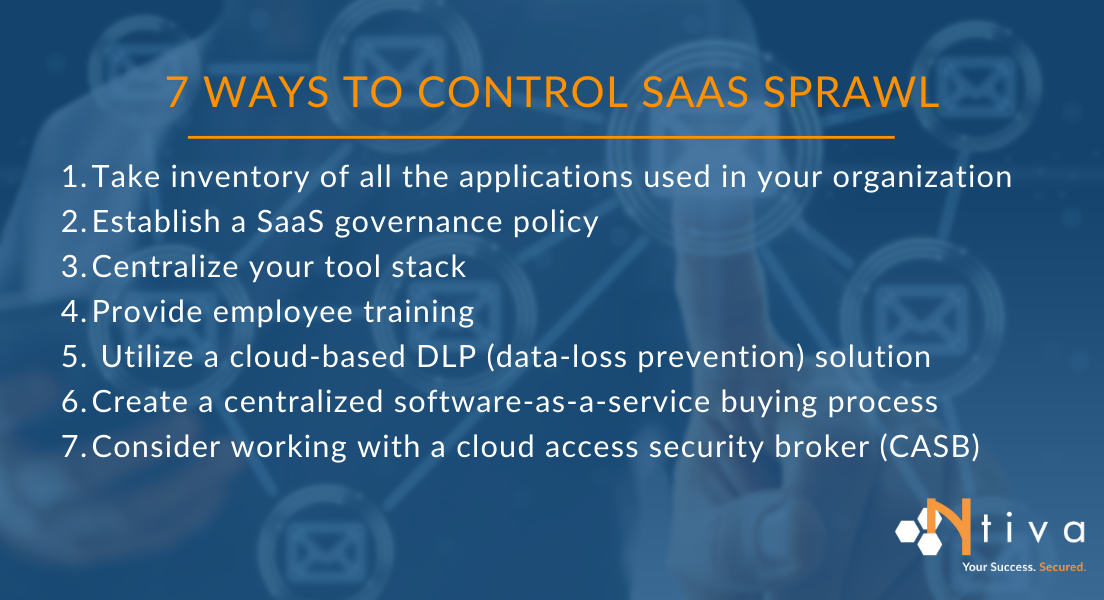SaaS tools are often hailed as a savior of the workplace, delivering an array of capabilities, efficiencies, and flexibility. But the sudden implementation of remote work during the COVID-19 pandemic three years ago has shifted how companies use their tools and created a new problem — SaaS sprawl.
What is SaaS Sprawl?
SaaS Sprawl" happens when organizations use too many unmanaged third-party cloud apps, which can cause problems like increased costs, security risks, and difficulty managing data. When a company builds up a large stack of applications without proper oversight, it creates several possible challenges for the organization. These include security concerns, cost issues, and difficulty tracking usage.
These apps ("Software as a Service") are prevalent in business because they are flexible and scalable. But if organizations don't track how many they're using, it can lead to many unnecessary and potentially harmful apps lurking in their systems and cloud platforms.
Why is SaaS Sprawl a Problem?
Software-as-a-service (SaaS) tools have revolutionized the way organizations operate. They offer many benefits, such as reduced vendor lock-in, faster time to value, and enhanced scalability and collaboration. But, they also come with challenges that can negatively impact an organization's performance and profitability.
SaaS sprawl creates "Shadow IT."
SaaS sprawl is a growing problem that affects companies of all sizes. It occurs when different departments purchase third-party software applications without the approval of the IT department, resulting in duplication and inefficiencies. This type of software usage is known as Shadow IT, and it is a significant security problem for many organizations. When these applications are not managed or tracked, they can create unforeseen security problems, data scalability, and poor workflow management.
SaaS sprawl costs your company money.
SaaS sprawl makes it difficult for organizations to stay on top of their SaaS costs. As a result, they may need help to effectively manage their expenses and ensure they are getting the most value for their money, impacting an organization's budget.
Employees often use SaaS applications at their discretion, which can lead to excessive usage of the tools. In addition, these apps might need to be clarified for your IT team because they cannot track how these applications are used or what information they store.
In addition, the decentralized distribution of information from different apps can lead to data sprawl because each application will have its nuances and unique features. Again, this can cause issues for your IT department because they need to track how the data is stored or who has access to it.
These are just a few reasons why taking steps to prevent employees from purchasing unnecessary services is crucial.
READ MORE: 6 Tips For Improving Cloud Computing Security
7 Ways To Control SaaS Sprawl
SaaS sprawl occurs when a business builds an extensive portfolio of apps without properly vetting and managing them. This can cause a number of issues, including productivity loss and cost overruns.

#1: Take inventory of all the applications used in your organization
One of the best ways to manage SaaS sprawl is to regularly take inventory of all the applications used in your organization across different departments. This can give you a clear picture of which applications are approved by IT and which are not.
This can be done manually or by using a software asset management tool. Once you have a list of all the apps, you can start tracking the costs associated with each application and how employees are using them. This will help you understand which apps cost your company the most and which should be utilized more.
#2: Establish a SaaS governance policy
Develop a policy that outlines the guidelines for the procurement, deployment, and use of SaaS applications within the organization. This policy should cover security, data protection, user access, and budgetary considerations.
#3: Centralize your tool stack
Another way to manage SaaS sprawl is to centralize your tool stack, ensuring that teams use the tools they need for their work. This can be challenging for some departments, but improving employee productivity and reducing the burden on IT is worth the effort.
#4: Provide employee training
Educate your employees on the risks of using unauthorized SaaS applications and the importance of adhering to the organization's SaaS governance policy. This can help prevent unauthorized applications that can lead to SaaS sprawl.
#5-Utilize a cloud-based DLP (data-loss prevention) solution
You can also prevent data leaks and theft by ensuring that sensitive information is not scattered across multiple cloud apps, which can be dangerous for your company. To combat this, use a cloud-based data loss prevention (DLP) solution that automatically discovers, classifies, and secures sensitive information contextually in all formats.
#6: Create a centralized software-as-a-service buying process
Lastly, you can create a centralized Software as a service buying process to ensure you get the most value when purchasing new apps and services. This will help you eliminate SaaS sprawl from your organization and provide a better user experience for everyone.
#7: Consider working with a cloud access security broker (CASB):
Businesses' biggest challenge when controlling SaaS sprawl is achieving visibility into the entire software portfolio. A CASB can help you monitor and secure access to SaaS applications, providing visibility into user behavior and identifying potential security threats. This level of visibility is crucial to reducing software costs, improving security, and ensuring that your business gets the most out of its tech investments.
Summary
By putting processes in place, it will be easier for IT and procurement teams to determine whether new SaaS applications should be purchased. This will help reduce the number of unneeded applications being added to your SaaS portfolio and can save you money down the road.
This will also make it easier for your line of business leaders to approach your IT and procurement team for the applications they need instead of attempting to find a solution themselves. This will save you time and money and improve the efficiency of your business.
Putting policies and processes into place to manage SaaS sprawl will provide a "single source of truth" for all the applications in your organization's SaaS portfolio. This will allow your IT, procurement, finance, and other departments to make better decisions regarding your SaaS portfolio by leveraging a single source of truth for all the insights they need.



